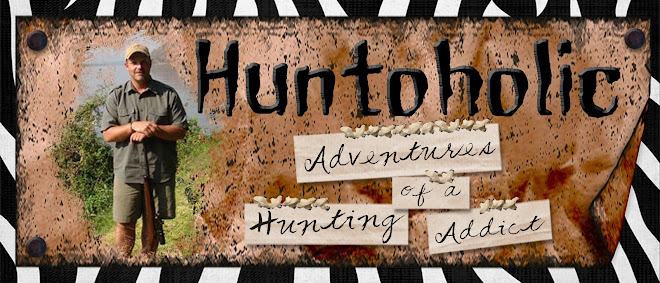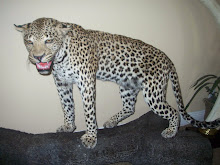 2008 was the year of the smoke pole. While we're certainly not die hard muzzleloader hunters, as fate would have it, we spent no time in 2008 hunting North American big game with anything other than the sulfer-spewing single shots. With muzzle deer tags in both Utah and Nevada, we'd planned to use the Utah hunt as a warm up for the more coveted late season Nevada tag in area 115 (Wheeler Peak).
2008 was the year of the smoke pole. While we're certainly not die hard muzzleloader hunters, as fate would have it, we spent no time in 2008 hunting North American big game with anything other than the sulfer-spewing single shots. With muzzle deer tags in both Utah and Nevada, we'd planned to use the Utah hunt as a warm up for the more coveted late season Nevada tag in area 115 (Wheeler Peak). We saw plenty of deer during Utah's September hunt, which we conducted from base camp at Enterprise Resevoir, but not the obscene numbers we'd encountered while we were there in 2006. Nonetheless, Slim was successful in connecting on a nice buck on his last night of hunting.
 During the course of the four days we were hunting, we'd discovered that the nicer bucks were lying high in the steep ridges in the thick oak, and so we began concentrating on those areas. On the last morning, after Slim had left for a northern Utah elk hunt, Mark and I went on a lung-searing march straight uphill and were able to push a group of deer from the oak and aspen thickets. One buck was massive, but the only good look I got at him was from about 550 yards as he motored up a far hillside and over the ridge. The area is incredibly beautiful. It was more than worth all of the hiking we did.
During the course of the four days we were hunting, we'd discovered that the nicer bucks were lying high in the steep ridges in the thick oak, and so we began concentrating on those areas. On the last morning, after Slim had left for a northern Utah elk hunt, Mark and I went on a lung-searing march straight uphill and were able to push a group of deer from the oak and aspen thickets. One buck was massive, but the only good look I got at him was from about 550 yards as he motored up a far hillside and over the ridge. The area is incredibly beautiful. It was more than worth all of the hiking we did.  With some practice under our belts, we headed into the November Nevada hunt with renewed hope, both that our skills were honed and that hunt time/area were much better. The theory was the late season muzzleloader might give us a chance at some rutting bucks; and to some extent, it did. But, generally we didn't get the cold weather we hoped for and most of the deer we found of any significance were high (many of them literally on the base of Wheeler Peak) and not overly interested in the does.
With some practice under our belts, we headed into the November Nevada hunt with renewed hope, both that our skills were honed and that hunt time/area were much better. The theory was the late season muzzleloader might give us a chance at some rutting bucks; and to some extent, it did. But, generally we didn't get the cold weather we hoped for and most of the deer we found of any significance were high (many of them literally on the base of Wheeler Peak) and not overly interested in the does.On about the fourth morning of hunting I spoted this buck at about 1,000 yards, lying down under a pinon tree. There were two does with him, and the minute Slim put the scope on him, I knew we had to try to get on him. Fortunately, Mark and Kyle, Slim's father in law were willing to stay behind to watch with the scope to make sure he didn't sneak off over the ridge above.
Slim and I started in the valley below these deer with a ridge between us and the buck. For whatever reason, the buck didn't even stand up until we were within 250 yards. At that point we moved to within 125 yards, using a small juniper as cover. The buck was standing facing us, and I took what might have been an ill-advised frontal chest shot with a muzzleloader and open sights at 125 yards.
As it turns out, this was the biggest buck we were able to find in about 10 total days of hunting. I'm convinced that there are gigantic deer in the area, but a guy would need the perfect convergence of weather, rut and simply being in the right place at the right time. Without doubt we'll try the area again.
Left - l to r Kyle, Mark, Slim, Ryan
































